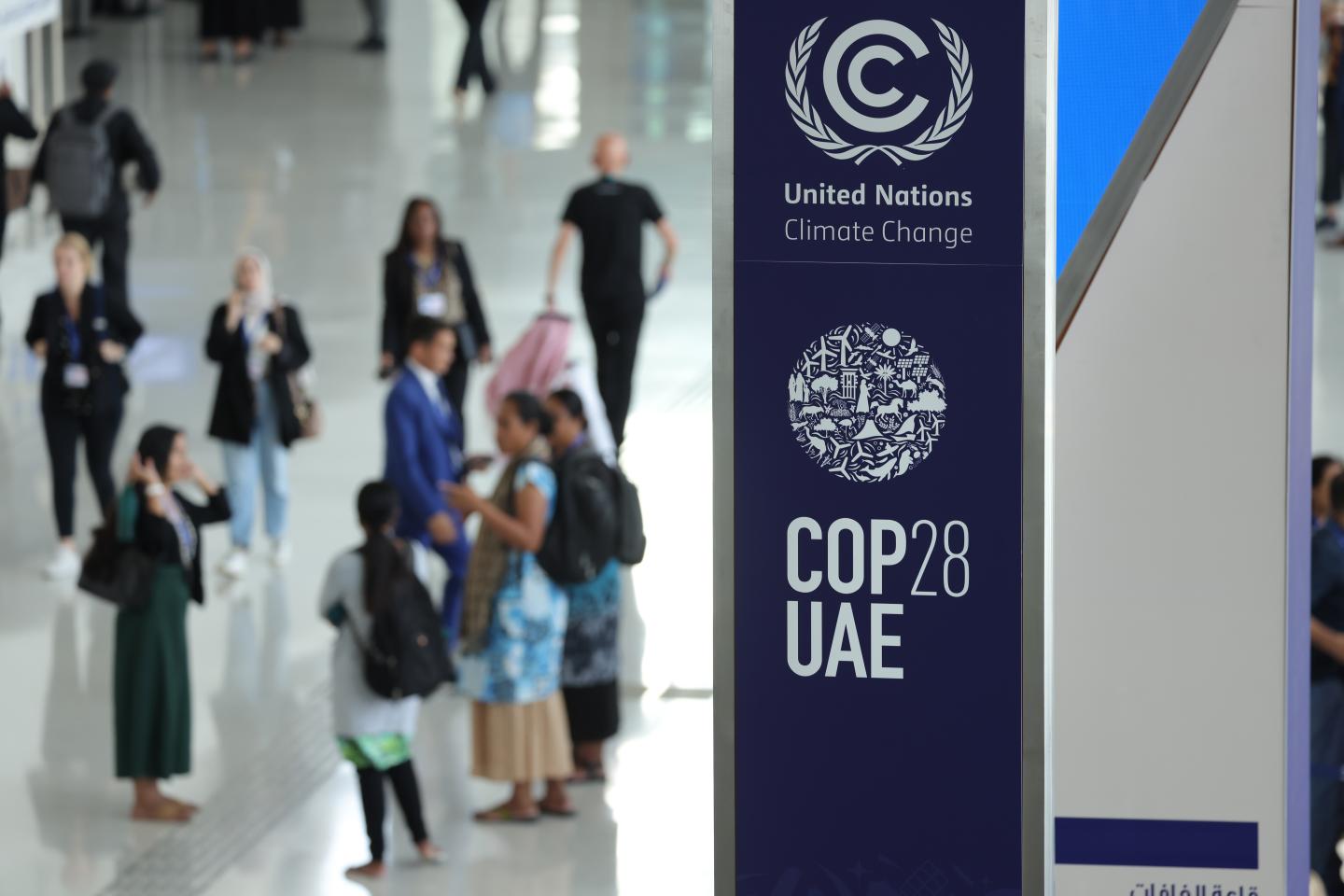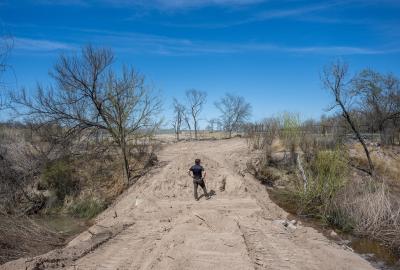Methane takes center stage at COP28
New commitments from major fossil fuel producers signify momentous progress on climate, says Environmental Defense Fund president Fred Krupp
This year’s U.N. climate talks are off to a remarkable start with a series of big, bold strides to reduce emissions of methane, a powerful climate pollutant.

Methane from fossil fuel production, agriculture and other sectors is responsible for about 30% of current global warming. New commitments from both governments and industry stand to cut those emissions dramatically.
And to make sure they do, Environmental Defense Fund and allies have launched an independent partnership to track and report their progress using satellites and other data.
Action started before COP28 began.
On November 7, China announced a comprehensive National Methane Action Plan. A week later, the European Union finalized regulations to limit methane pollution from oil and gas operations — including initiating measures to impose methane performance standards on natural gas imported into Europe, sending a loud signal to global gas markets.
Then came a burst of new news in the COP28 opening weekend.
Climate action at COP28
The U.S. Environmental Protection Agency unveiled their strongest-ever clean air standards setting protective limits on methane pollution from both new and existing oil and gas sources. The new policy will reduce tens of millions of tons of climate-damaging methane and other toxic, smog-forming pollution from leaks, venting and flaring.
COP President Dr. Sultan Al Jaber came next, with an announcement that around 50 major oil and gas companies would sign on to an Oil and Gas Decarbonization Charter, under which operators agree to limit emissions to just 0.2% total production by 2030, and eliminate their wasteful, routine methane flaring by 2030. These commitments now apply to 40% of global oil production.
Importantly, the majority of OGDC signatories are national oil and gas companies like Saudi Aramco, SOCAR, the State Oil Company of the Republic of Azerbaijan, and the National Oil Company of Libya.
Collectively, national oil companies are responsible for over 50% of global oil and gas production and an even higher portion of the total methane pollution attributable to the industry. And to date, most of these companies have done little to nothing to address their methane emissions.
As former U.S. EPA head William Reilly, said: "The climate crisis demands action, and that's what this is. Cutting methane pollution is the fastest way to limit near-term global warming. It's not the whole answer but it's real progress."
EDF played a major role in shaping the methane provisions of the OGDC, working with COP secretariat staff and NGO partners like Clean Air Task Force.
EDF also helped drive the development of an industry-funded program at the World Bank to help companies from emerging and developing economies meet their commitment under the OGDC.
And we are a partner in a new alliance of technical service providers — also resourced by industry — to help companies from low- and middle-income countries build the capacity to cut methane emissions and flaring.
Holding companies accountable
Coupled with the new EPA methane standards and other measures in today's UAE/China/US summit, this will be the single most impactful day I've seen at any COP in 30 years in terms of slowing the rate of global warming.
But for all these policies, the name of the game is accountability.
Given the history of bold promises made at climate summits that then fail to deliver, it’s understandable that many are asking for third-party verification to ensure these commitments are met.
That’s why EDF is joining forces with top allies on an independent effort to ensure companies deliver on these promises. Made possible by generous support from the Bloomberg Philanthropies, the watchdog alliance includes the International Energy Agency, and the UN Environment Programme.
Together we’re creating a transparent, data-driven framework to hold participating oil and gas companies publicly accountable for their methane performance.
All of this will be possible thanks in large measure to MethaneSAT. Launching next year, this highly sophisticated instrument will be the most versatile methane-detecting satellite in space.
It has the unique ability to spot major emission events as well as millions of small sources. Based on our research, these diffuse and unpredictable sources could account for half or more of total emissions in some regions. MethaneSAT is bringing unique and complementary capabilities to a growing ecosystem of methane satellites including Carbon Mapper, GHGSat and others.
Reaching the methane moment
How did methane go from almost nowhere a decade ago to becoming the climate story of the year? Like most overnight successes, it took years of hard work and determination. And while many others had a role, no organization played a bigger one than Environmental Defense Fund.
For over a dozen years, we have organized unprecedented scientific research showing that US oil and gas methane emissions were 60% higher than official estimates. We successfully helped create methane policy at the state, national and international levels. At the same time, we worked with companies to develop new technology and better operating practices to cut emissions.
Along the way, the regulatory and voluntary efforts have become mutually reinforcing, with progress in one sphere helping to raise the bar in the other. It is my hope that this week marks the beginning of real steps by producers to do their part to address the climate crisis.
Of course, there’s much more beyond methane that needs to be done — especially ramping down fossil fuels and ramping up renewable energy — but today’s announcement will matter to our climate future provided actions match words. And we’ll be here to see that they do.
Fred Krupp is president of the Environmental Defense Fund.


